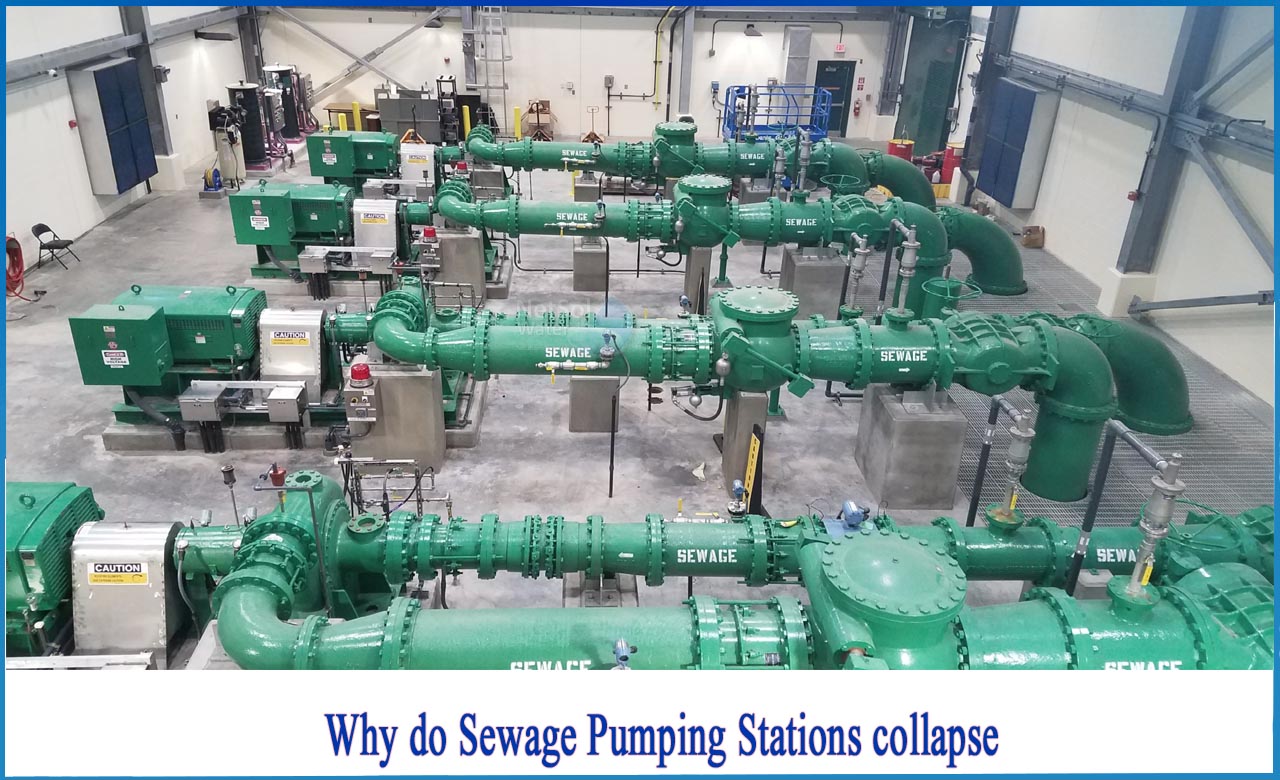Why do Sewage pumping stations collapse?
Pump loads can be reduced by properly maintaining pumping-station, pipes and other appurtenances. When operators discover significant head losses (a pressure reduction on the suction side of the pump or a rise in pressure on the discharge side), they should investigate whether the losses are the result of partial blockage, a restriction elsewhere in the line, or materials built up on the pipe wall.
To locate clogs, operators should first check the pressure at various places in the suction and discharge pipework, looking for areas with sudden head loss (such as valves or other constrictions). If anything becomes entangled in a valve or other accessory, the operator should stop the pump and physically open the valve head to remove the obstruction.
A: Blockages
A blockage is the most typical cause of pump station failure. Blockages often arise when the system has not been properly maintained or defined in the first place, implying that it is not built to handle the degree of use. These can develop in a variety of locations inside the station, including the piping, valves and the pump itself and any of these can cause failures. Fat build-up, generally from culinary waste, is a common cause of a blockage.
B:Controlling the level
Another typical reason of pump station failure is a faulty level control system, which is caused by either the floats malfunctioning or debris accumulating around them.
C:Ingress of water
Failure can also be caused by water infiltration into the pump's motor, which might be caused by a broken cable or failed mechanical seals.
D:Pump for Corrosion
Stations can also fail if there is any unmaintained and corroded piping, or if any valves have comparable wear and corrosion. Equipment failure, faulty components within a control panel may potentially result in total failure.
Solutions for failed pump
A: Servicing
Regular service and maintenance is the simplest and most efficient strategy to avoid failure. All major places where failures might occur are examined during a service. Any possible issues are then either resolved at the point of service or highlighted, as further work to be completed. Servicing gives piece of mind and considerably minimizes the likelihood of the pump station failing unexpectedly. Regular maintenance also saves money in the long term since there are fewer unexpected emergency repairs.
B: Tankering
The service check will determine whether the pump station has any debris or fat build-up. If there is, it will require the use of a tanker and a jet washer to remove it.Regular tankering to eliminate build-up may considerably lessen the likelihood of blockages; consequently, having the station tankered at least once a year is a wise practice.
C:Controlling
Managing input or controlling what goes into the pump station can also help to reduce the danger of blockages, because all pump stations have restrictions in terms of particle size and chemical or fat content. When system users purposefully throw wrong objects into the sewage system, this can frequently result in clogs.
D:Technology
Some pump stations are not often checked because they are located offsite or are difficult to access. In this case, we recommend implementing a text message system that warns users and the maintenance staff to any difficulties. This method can detect issues such as extremely long pump operating times (showing a possible obstruction), tripped pumps, high levels in the tank, and power outages. This monitoring is done entirely within the control panel. Pump stations can also be retrofitted using these technologies.
For further information or product purchase related query, contact us at +91-9650608473 or drop a mail at enquiry@netsolwater.com.



